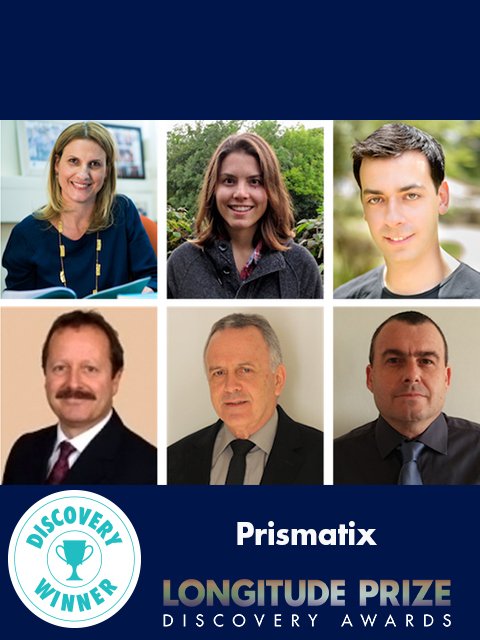This team successfully won a Discovery Award seed-funding grant to help further develop their ideas for their Longitude Prize application and create a diagnostic test that helps solve the problem of global antibiotic resistance. Below we have asked them to explain their test and motivation for applying.
Please explain your test.
We test a variety of bacterial strains, in order to compare the lowest concentration of relevant antibiotics effective, to detect resistance and to alert a physician which antibiotic would be best for a patient’s infection.
Please share a more detailed description of this work from a medical professional’s perspective.
We have developed a method of phase-shift reflectometric interference spectroscopic measurements, referred to as PRISM that monitors bacterial activity on photonic silicon-based microstructures in real time. With this method we can rapidly determine minimum inhibitory concentrations of antibiotics using miniaturised photonic chips in a substantially faster time readout time in comparison to state-of-the-art, automated AST systems, such as the Vitek 2. This phenotypic AST platform optically measures interactions of bacteria colonised on a microstructured surface without the need of fluorescence labels, excessive pre-handling, or genomic/metabolic profiling.
Why did you apply and what will the Discovery Award funding be used for in your work?
We applied in order to further advance our PRISM technology as we endeavor into assaying direct clinical samples taken from a neighboring medical centre (namely Bnai Zion Medical Center; Haifa, Israel). The Discovery Award will aid in the fabrication and advancement of our disposable, microfluidic devices with integrated photonic sensors for continued analysis of clinical samples, such as urine, blood, sputum and cerebral spinal fluid.
What difference will your work make in the long term with regards to antimicrobial diagnostics?
Our work will provide a faster alternative to observing antimicrobial resistance and providing an accurate MIC readout. Our method serves as a rapid phenotypic antimicrobial susceptibility test that aims to require minimal sample handling.
If there is a design for a prototype, please describe it and how it will work.
We have plastic slides that are 3 x 1 inches with 10 small parallel channels. In the middle of each channel, there is a small square chip (like those seen below). This square chip reflects many different colors, similar to a CD or DVD. Though you can’t see it by eye, each chip contains millions of patterned microstructures. Because of these microstructures, the chip has the unique colorful reflectance. For the test, we add bacteria and antibiotics to each channel. We then track what happens to the colorful reflectance of each chip in that channel. Growth of bacteria on the chip causes changes in the colorful reflectance of the chip, which can be carefully monitored by simple, small and portable equipment.
Who is on your team?
Ms. Heidi Leonard
Prof. Ester Segal
Dr. Sarel Halachmi
Dr. Ofer Nativ
Mr. Liran Holtzman
Prof. Leigh Canham
If you are interested in collaborating with this team, please email us.

